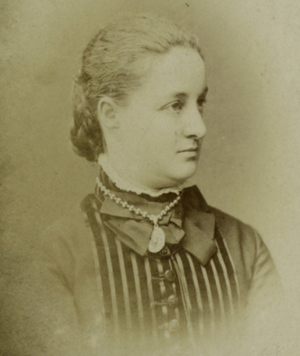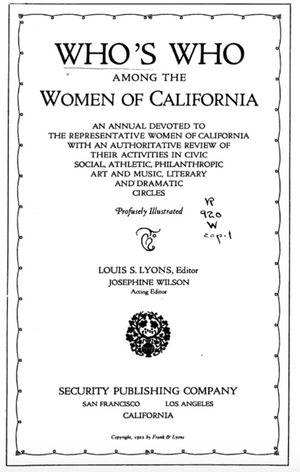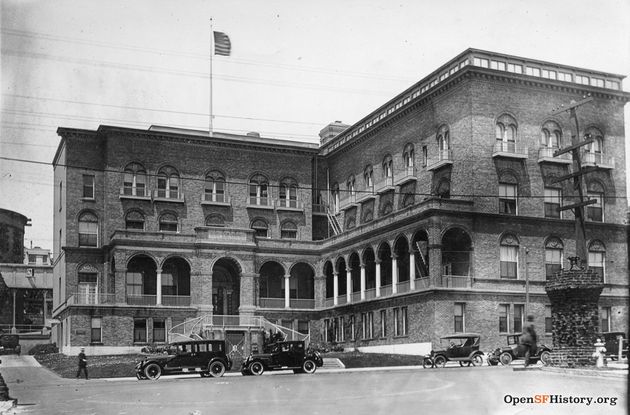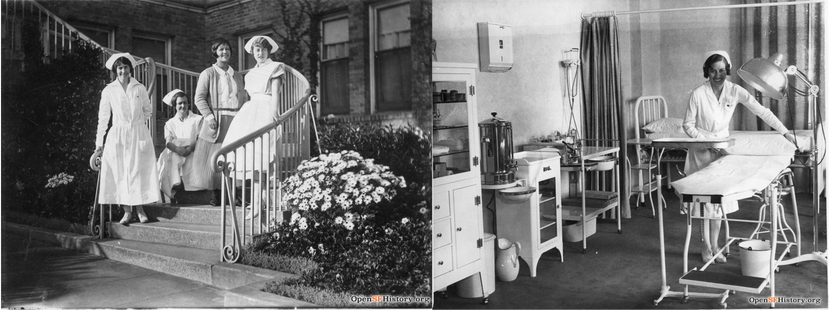Author: Aubrey Minshew, Museum Specialist, Truhlsen - Marmor Museum of the Eye®
During Women’s History Month, the Museum of the Eye is reflecting upon the long history of women in ophthalmology and American medicine. The history of women in ophthalmology takes us across the United States, and even into Europe, but imagine our delight to find that there was a part of this history centered in the museum’s hometown of San Francisco, California.
Dr. Elizabeth Sargent (1857-1900) was born in California and had a remarkable family. Her father, Aaron A. Sargent, was a member of the U.S. Senate and the House of Representatives. He was also the American ambassador to Germany. Her mother, Ellen C. Sargent, ran in the preeminent woman’s suffrage circles of the day, hosting Susan B. Anthony and Dr. Anna Howard Shaw in the family’s home in San Francisco. 
Elizabeth Sargent, MD
Image Credit: Elizabeth Sargent, undated; Portraits collection, PT; California Historical Society
Dr. Sargent attended Howard University Medical College beginning in 1876, only four years after Howard graduated its first female physician. Medical specialty programs in America did not accept women, but women of means could pursue a world-class ophthalmic education at the University of Zurich in Switzerland, which had begun accepting women a decade earlier. After pursuing her studies at the University of Zurich, Dr. Sargent joined her family, now living in San Francisco, becoming the second woman to practice ophthalmology in the United States. She practiced at a female-run institution called the Pacific Dispensary for Women and Children.
This clinic, the Pacific Dispensary for Women and Children, was initially a mystery. It no longer exists today, and we couldn’t help but ask: where was this hospital? And what happened to it?
 "Who's Who Among Women of California"
"Who's Who Among Women of California"
After some research, we can finally place the Pacific Dispensary on the map. In 1922, in a “profusely illustrated” book about “Who’s Who Among the Women of California,” there is a small vignette about female boards of directors that mentions a hospital run “by and for woman physicians” in San Francisco. As it turns out, the Pacific Dispensary was part of a wave of hospitals opened by female physicians across the entire country. Further reading revealed that the Pacific Dispensary opened its doors in 1875 at 520 Taylor Street in San Francisco, very close to Union Square. That location was short-lived, and the hospital was relocated to 3700 California Street, still in San Francisco, in 1885.
After the move, the Pacific Dispensary reincorporated as the Hospital for Children and Training School for Nurses. The building was grievously damaged by the San Francisco earthquake and fire of 1906, but a new building for the hospital on the same site was completed in 1911. In the early 20th century, the hospital continued to serve specifically women and children, and it became an important center for the treatment of infantile paralysis, or polio, through the 1940s. In fact, the hospital was the first location in the western United States to have a Drinker respirator (or “iron lung”) installed.

The 1911 Children's Hospital Building
Image Credit: OpenSFHistory / wnp27.7692
During this time, male medical students and doctors were slowly incorporated into this originally all-female institution, and the hospital removed all its restrictions on admitting male patients in 1955. By now, what was originally the small Pacific Dispensary for Women and Children had grown into the well-known Children’s Hospital of San Francisco, which provided health care to generations of San Franciscans until 1991, when it became a part of the Sutter Health System. The 3700 California Street hospital building still provides specialty care for children, continuing to serve the original mission of forward-thinking female physicians like Dr. Elizabeth Sargent.
 Nurses Pose at Children's Hospital on California Street
Nurses Pose at Children's Hospital on California Street
Image Credit: OpenSFHistory / wnp27.7694 / wnp27.7696
To learn more about the history of women in ophthalmology, visit the Museum of the Eye during the months of March and April. Until the end of April, the museum will feature a small display called “Remarkable Women,” and will also be showing the video “Women and Minorities in Ophthalmology” in the museum Ed Center. Visit aao.org/visit-museum for current museum hours.